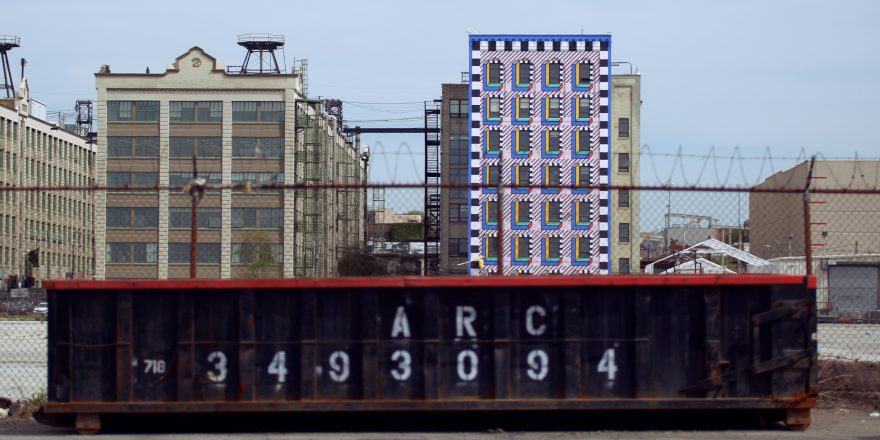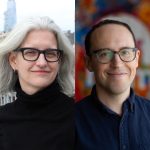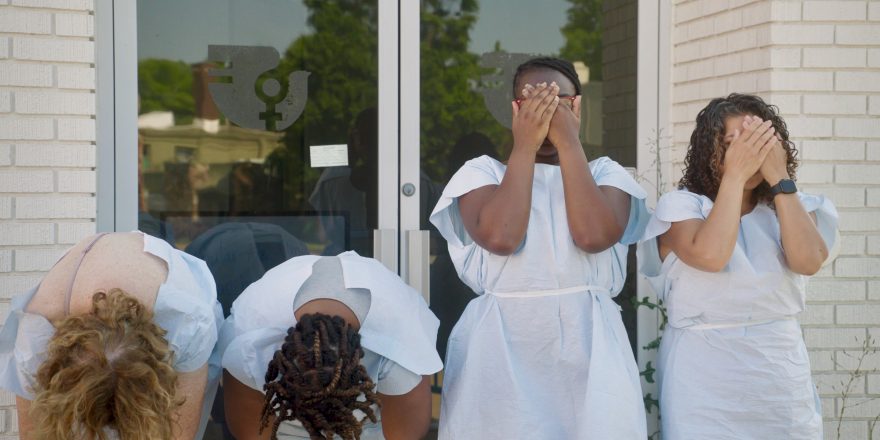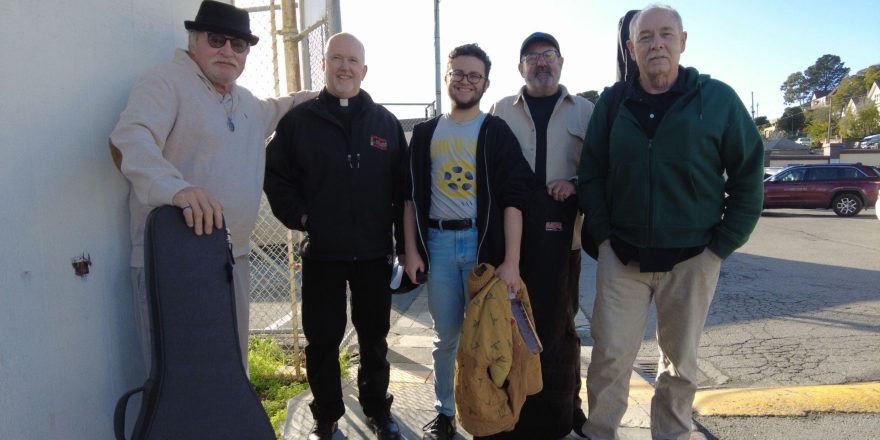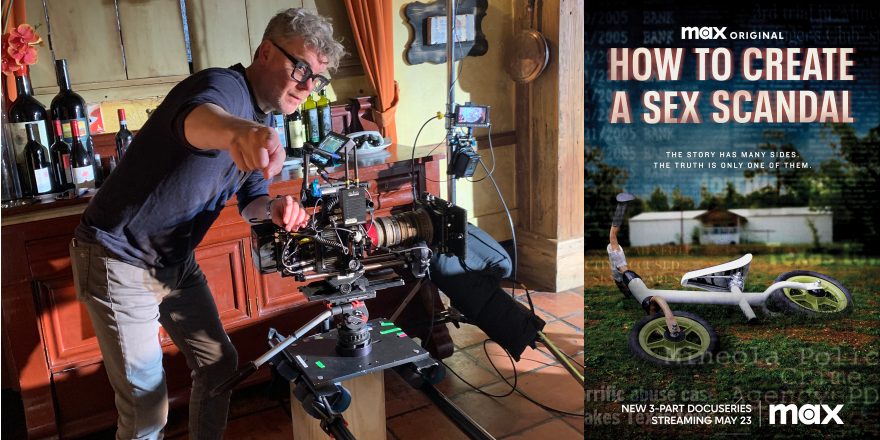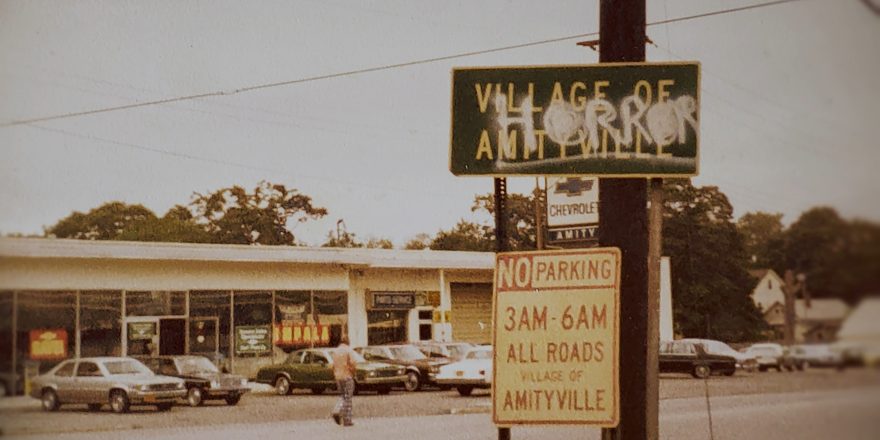The idea for a documentary about Industry City and its impact on Brooklyn’s Sunset Park originated in Parlay, an 8th Avenue coffee shop in the neighborhood’s Chinatown. Parlay is one of those “first wave of gentrification” places that pop up when the demographics of a neighborhood are starting to change but it hasn’t yet led to a wave of higher-end and more corporate establishments. Run by a local man whose mom had a pet supply store next door and made the roti and chicken curry they served, Parlay also served great coffee and wine. It’s slightly awkward for creative professionals like us (gentrifiers, essentially), because we know what it might mean for the future. But it’s also a great place.
We had been meeting for breakfast regularly and Industry City was a frequent topic of conversation. Industry City is a set of massive, interconnected industrial buildings on the Sunset Park waterfront. Built at the turn of the previous century, with 16 buildings and six million square feet of space, it was run-down and about 70 percent occupied when it was bought by Jamestown Properties in 2013. Jamestown had redeveloped Chelsea Market in Manhattan, and was quickly turning Industry City into a “destination” for creatives.
As we explored the complex, we saw their “Innovation Alley,” high-end retail shops and dance parties in the courtyards that felt alarmingly out of sync with the surrounding neighborhood. New restaurants were popping up on Google Maps almost daily. An “avocaderia” run by three Italian entrepreneurs and featured on Shark Tank? An “extraction coffee lab” (in)famous for the most expensive cup of coffee in the city? When IC started mounting art shows that drew crowds from Manhattan and Williamsburg, and hosted Rooftop Films screenings, we felt both “spoken to” and annoyed that people much like us were being courted to help rebrand and ultimately, we thought, boost the real estate value of the complex. Suddenly, Sunset Park was hailed as one of the “coolest neighborhoods in the world” by Lonely Planet, framed by the success and growth of Industry City.
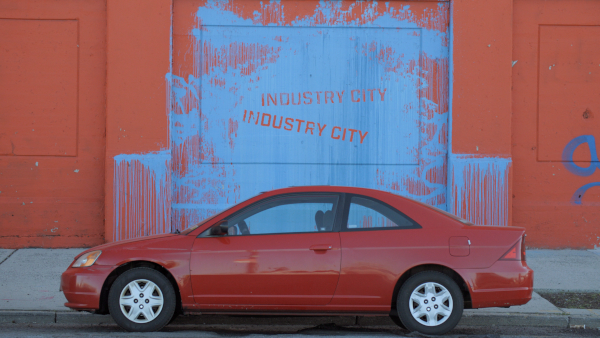
We are both filmmakers and use media-making as a way to try to understand the world, raise awareness about social and political problems and hopefully contribute to positive change. Kelly had moved to Sunset Park after making her 2012 documentary My Brooklyn, about the ways developers and city government colluded to reshape Downtown Brooklyn without taking into account the communities that had invested in it and had attachments there. After being priced out of Fort Greene, she was getting to know people and organizations in Sunset Park and starting to understand the neighborhood’s political and real estate dynamics. Jay had moved Meerkat Media, the worker coop and arts collective he co-founded, to Sunset Park in 2014 after a multi-year saga of displacement from three different work spaces across Brooklyn. He was working on a documentary about “participatory budgeting” – a civic experiment that invited community members to brainstorm direct ways to spend millions of dollars from their local council member’s budget – and figuring out how Meerkat could support community work already being done by Sunset Park’s highly engaged communities.
When Industry City announced plans to change land use rules so they could build two hotels, add new buildings and increase their retail footprint to include the ground floor of every one of the 16 buildings, we started documenting the public process and the rezoning fight that was just beginning.
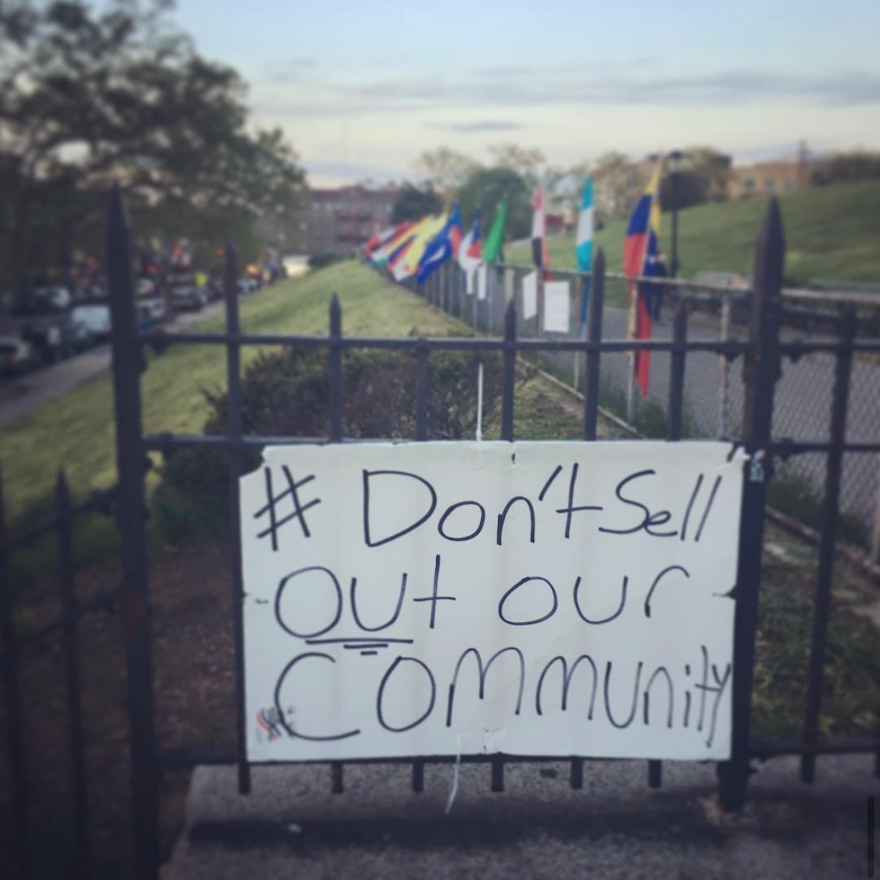
Hundreds of shoot days later, having filmed countless community meetings, private sessions of the Council Member’s working groups, negotiations between the developer and council member, an 11-hour remote zoom hearing during peak pandemic, we found ourselves staring down almost a thousand hours of footage. And it was almost all meetings! We are the kind of wonks who love a good public meeting, but who wants to come and see a movie about meetings?
So we spent a year watching and sifting through it all.
On the surface, it seemed like it might be another David vs. Goliath story. “Community members fight a giant developer, and most likely won’t be able to defeat the incredible power of global capital to steamroll over neighborhoods in search of profit.” We’ve seen that film. We’ve even made that film. Some of the best documentaries of all time are about that struggle.
Emergent City is partly that film, too. But as we lived through the reality, and processed what we had filmed, things got exponentially more complicated.
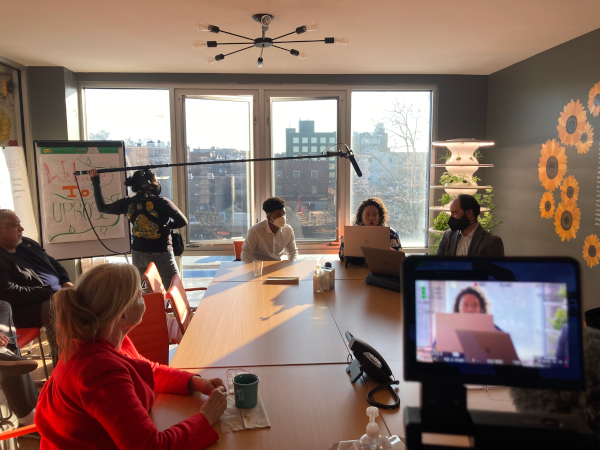
It was true that Industry City was drawing thousands of new people to Sunset Park, and they were discovering a great neighborhood many of them wanted to live in. Media and other companies were moving hundreds of their employees to work in Industry City’s renovated spaces, and many wanted to walk to work. Rents and housing prices were ticking up, and it was pushing out longtime tenants, many of whom are especially vulnerable because they are undocumented.
It was also true that Industry City’s developers had spent hundreds of millions of dollars upgrading buildings that were basically falling apart, and had been pummeled by Superstorm Sandy, and had brought thousands of new jobs to the neighborhood. At least some of those jobs (it was frustratingly difficult to get any numbers) were going to local residents who were trained at the Innovation Lab they had created to channel young people into jobs at IC companies.
And as we listened more, we realized that what seemed mostly like a story about gentrification and housing was also about climate justice. We learned that Sunset Park had one of the most successful working waterfronts in the city, and that Industry City was in the middle of an Industrial Business Zone the city was supposed to be protecting from uses like hotels and offices. We learned that the national climate justice movement was partially incubated in Sunset Park through the work of UPROSE and Elizabeth Yeampierre, and that the community had been planning for decades to create a “green port” that now, suddenly, was within reach.
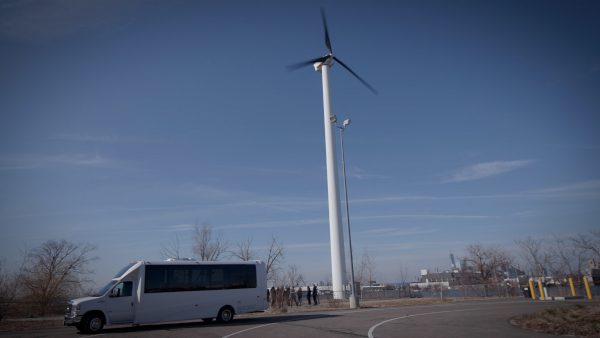
And then there was the thorny question of “community” – something everyone seems to be speaking from and for, but that turned out to be less monolithic than people might expect. A lot of people in Sunset Park were really suspicious of Industry City, and thousands signed petitions against the rezoning. But some residents really liked the improvements Jamestown had made to the buildings and courtyards, and enjoyed events like Salsa Night. Some had businesses there and would actively speak out in favor of the rezoning at hearings and community board meetings.
Many, many constituencies in Sunset Park were really worried about the displacement of tenants and industrial businesses that was already happening, and would likely be exacerbated by a rezoning. But even they were deeply divided around strategy. One group believed it would be best to negotiate a Community Benefits Agreement (CBA) with Industry City to tighten up the loose zoning on the waterfront and get community benefits from Jamestown, including a space dedicated to manufacturing. Others were completely opposed, citing Jamestown’s immense economic advantage in any negotiation and the fact that CBAs have failed elsewhere throughout the city.
As we worked through the material, in our minds were the questions that always gnaw at documentary filmmakers trying to find coherence in the random messiness of life: Is there a film here? What can we contribute to understanding this? Will anyone still care by the time we finish it?
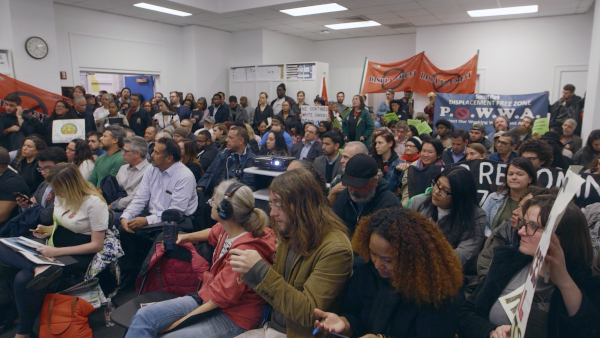
Slowly, though, a story took shape that wasn’t like anything we had made before. We knew we didn’t want to be didactic, and hadn’t recorded very many interviews. Given the frayed political discourse evident everywhere in society, and a polarization and inability to listen we also saw in our footage, we didn’t think it would be helpful to tell people what to think. Instead, we allowed viewers to observe things from many vantage points, and to draw their own conclusions over time.
We wanted to make a film that would draw people into the complexity and contradictions of the issues, to have them be immersed in one viewpoint and feel its power, and then to have to deal with counter-arguments that were also real and heartfelt. To feel a desire to side with “the community,” only to have to question what and who a community actually is. Not everyone in Sunset Park was on the same page over goals, and those who were had deep divisions over strategy. We hope audiences will grapple with what was actually a pretty complicated reality, and to think about what it’s like when a community goes through this kind of process.
It became clear that a lot of the standard tools in the documentary filmmakers’ toolkit weren’t going to serve us with this film. Most films use character to generate empathy in the viewer – by caring about one person, and their goals and obstacles, you stay hooked into the story. With Emergent City, we explored whether it was possible to make people care without relying on empathy with one individual. We wanted to illuminate power and how it circulates – through institutions, organizations and people – in a broader sense. We didn’t want to lose sight of the very real impacts of policies or corporate actions, but we also felt that people could fill in those gaps with their own experience and knowledge, and that other films have told that story. There are compelling people in the film, to be sure, but focusing on one person would have shortchanged a broader opportunity to show systems at work.
We didn’t follow the rules for story arc, either. Rather than introduce the conflict early in the film, we took a while to “set the table.” These observed sequences signal to audiences that they can pay attention in a different kind of way, to what’s happening around the edges of the frame, to the really small moments that are usually cut from the film because they don’t advance plot and aren’t about character development or arcs.
Emergent City ultimately ended up being a meditation on the way that neighborhoods are made, and remade over time. A tribute to people in Sunset Park, and really all over the world, who are the doing the hard work of democracy with a small “d” – showing up, night after night after a long day’s work, to a meeting that might be frustrating and long, to try to hear one another, hash through differences, and have a voice, even when it seems outcomes are decided beyond their reach. When it comes to urban development – who decides? Who benefits? And why?
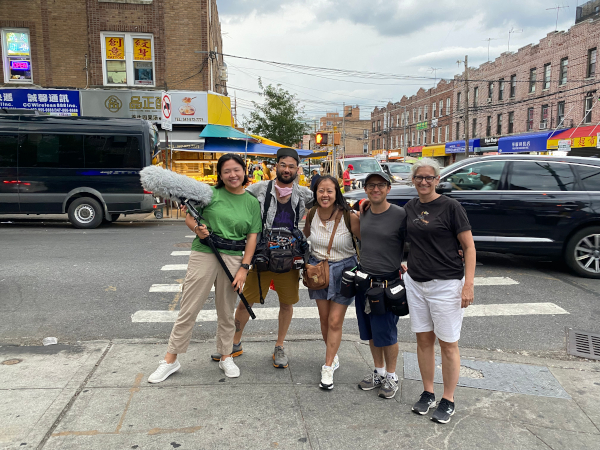
Geographer David Harvey writes in the book Rebel Cities, “The right to the city is … more than a right of individual or group access to the resources that the city embodies: it is a right to change and reinvent the city more after our hearts’ desire. It is, moreover, a collective rather than an individual right … The freedom to make and remake ourselves and our cities is, I want to argue, one of the most precious yet most neglected of our human rights.”
Making and remaking ourselves, adrienne maree brown reminds us in her book Emergent Strategy, is remaking the city and the world. We see Emergent Strategy as a process of invention and reinvention that occurs as people participate in remaking their homes, their neighborhood, their city. One meeting, one conflict, one failure or victory celebration at a time. We tried to capture a bit of that spirit and sensibility in Emergent City.
Featured image by Jay Arthur Sterrenberg; all images courtesy Kelly Anderson and Jay Arthur Sterrenberg.



